Over thousands of years, our varied and harsh climates have crafted flora that is completely unique to Australia and unique to particular regions.
While many have inspired famous lines in outback songs and poems for centuries, there’s been a recent resurgence in suburban gardeners wanting to incorporate more of these Australian native flowers into their yards.
Not only are Australian natives better suited to our climate than international imports, but they also help provide habitats and food for native wildlife.
Top 16 Australian Native Flowers
If you’re wanting to reinvigorate your garden with some Australian native plants and flowers, consider these.
1. Gum blossom
A home among the gum trees has more than just silvery leaves to offer; gum blossoms are a unique flower that native wildlife will love.
Reminiscent of fireworks, these flowers don’t have petals, but instead offer an explosion of stamens providing plenty of nectar for bees, other pollinators and nectar-feeding birds.
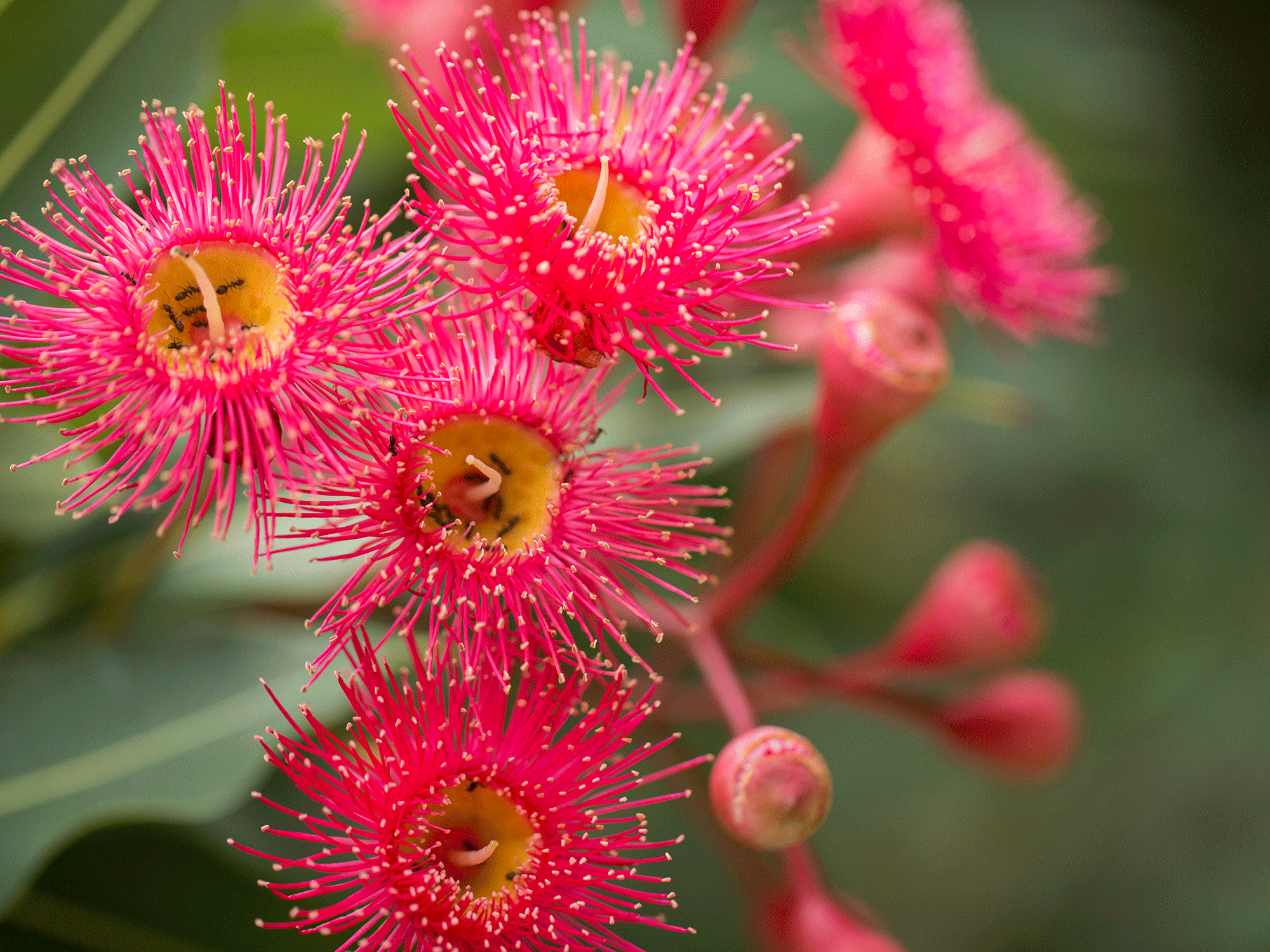
Gum blossom or Corymbia ficifolia is shaped like a magnificent fireworks display. Picture: Getty
While the red-flowering gum may come to mind, there are hundreds of varieties of flower gums with red, white, pink, purple, orange and yellow flowers. Check to see what varieties suit your climate and be sure to leave enough room for the tree to grow.
2. Waratah
The waratah is a striking flower that grows on trees and shrubs throughout the southeast of Australia including New South Wales, Victoria and Tasmania.
The bright pink-red finger-like petals curved inwards creating a sphere-like flower. The New South Wales waratah, with densely packed petals, is the most common and well-known and is also the state flower for New South Wales. The Gippsland and Tasmania waratahs have comparatively sparse petals. Other varieties, like the Shade of Pale waratah, have cream flowers.
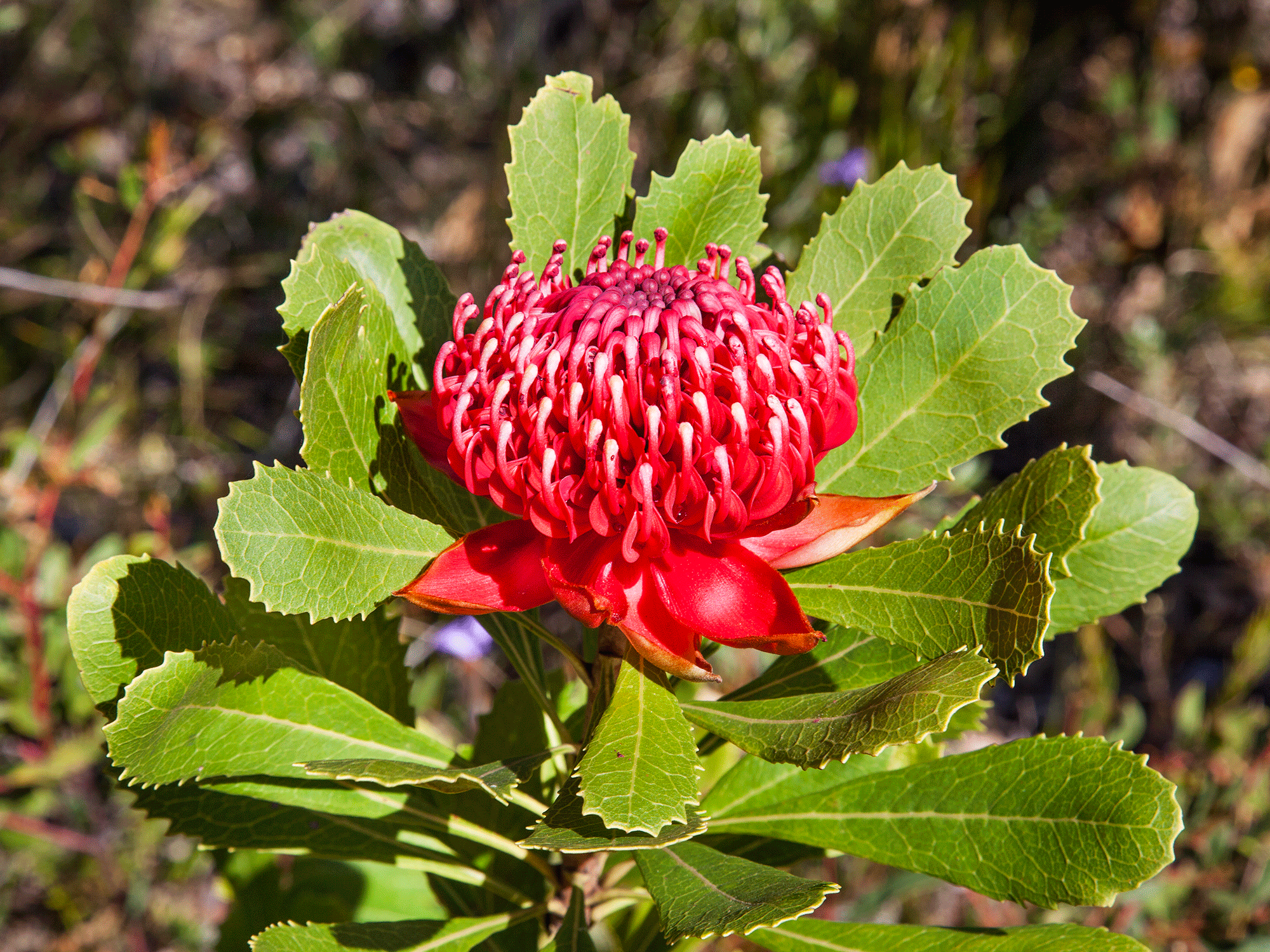
The state flower for New South Wales, the waratah is a stunning native flower. Picture: Getty
A true Australian native flower, waratahs dislike competition so, in the wild, are often seen after fires when their competition for resources has been eradicated.
Waratahs are happy in full sun to part shade and prefer protection from the harsh afternoon sun. Slightly acidic, sandy soil is best and don’t allow the soil to completely dry out.
3. Banksia
The banksia is another bright bloom known for its cone-like appearance. Varieties can be quite different from small shrubs to 30m trees and can therefore be found in many different
Unlike their namesakes in May Gibb’s famous books, Australian animals are fond of banksias as they are an important part of the food chain. Their nectar-rich flowers offer food for plenty of bees and birds, as well as possums and bats – and for this reason, the banksia is also known as the Australian honeysuckle.

Banksias have adapted to the Australian landscape over millennia. Picture: Getty
In the wild, banksia are resilient. Not even bushfires can stop banksias; 50% of species have adapted to be fire resistant, while the remaining 50% have seeds that regenerate quickly in the face of destruction.
In general, banksias prefer well-drained, sandy soil and full sun. Once established they are dry tolerant but require initial watering to get them established.
4. Bottlebrush
The softer-looking cousin of the banksia, bottlebrushes are technically a member of the myrtle family with cylindrical brush-like flowers that come in a range of colours.
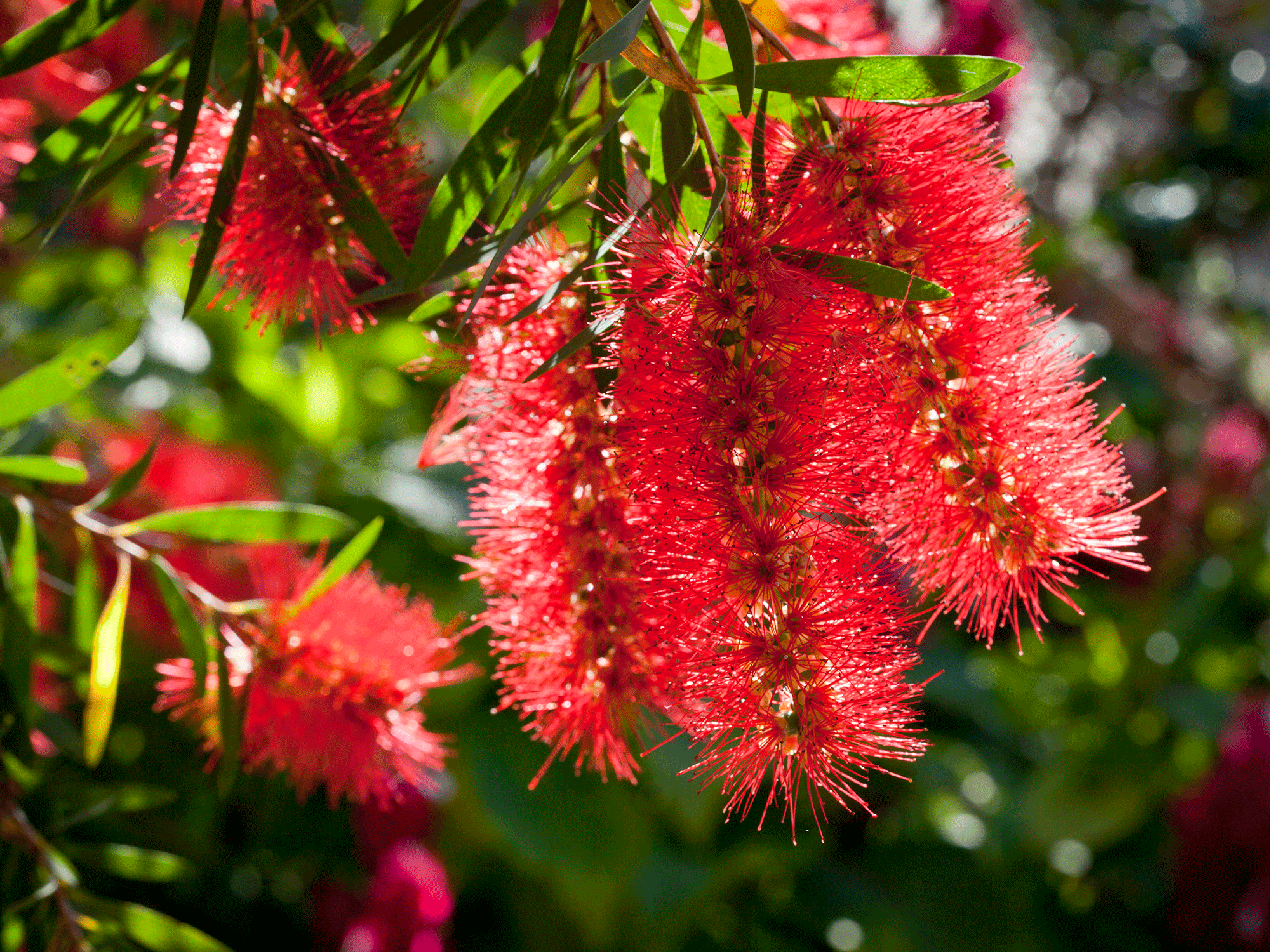
Bottlebrush plants are a great choice for suburban backyards. Picture: Getty
Smaller than banksias, bottlebrush plants tend to only grow to 4m tall depending on the species, making them a great choice for suburban backyards, although a few species can grow up to 12m tall.
Mostly found on the east coast, bottlebrushes are relatively easy to look after, requiring very little maintenance once established. They thrive in full or half sun and well-drained soil. A pollen-heavy plant, bottlebrush will attract plenty of pollinators to your yard.
5. Kangaroo Paw
Originally native to southwest Western Australia, these ornamental blooms can now be found in gardens across Australia.
The iconic flower is known for its red paw-like tubular flower, although green and black flowers can also be found, as well as flowers with combinations of colours.
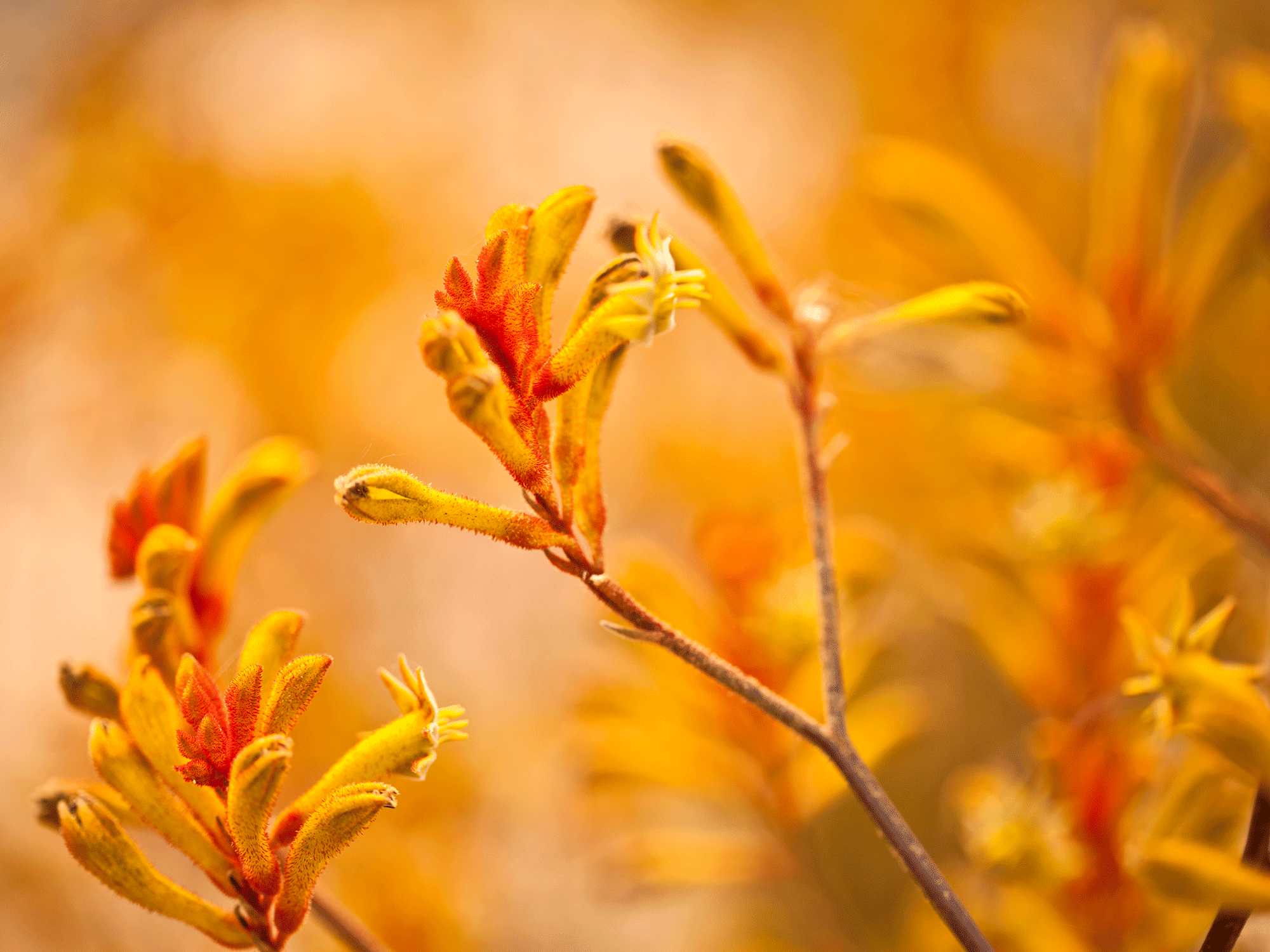
Kangaroo paw flowers come in a variety of colours and thrive in most areas. Picture: Getty
Suitable for all regions, Kangaroo paw enjoy full sun, well-drained and slightly sandy soil and need to be watered regularly.
6. Everlasting daisy
Everlasting daisies are a popular and bright flower thanks to their ability to retain their colour long after they have been picked and dried. Native to Western Australia, everlasting daisies are also known as paper daisies thanks to the dry, papery bracts around the flowers.
Despite their name, these flowers are annuals with seeds best sown in autumn and flower from September until November (or earlier in more humid climates).
Like many natives, sandy soil and full sun is best.
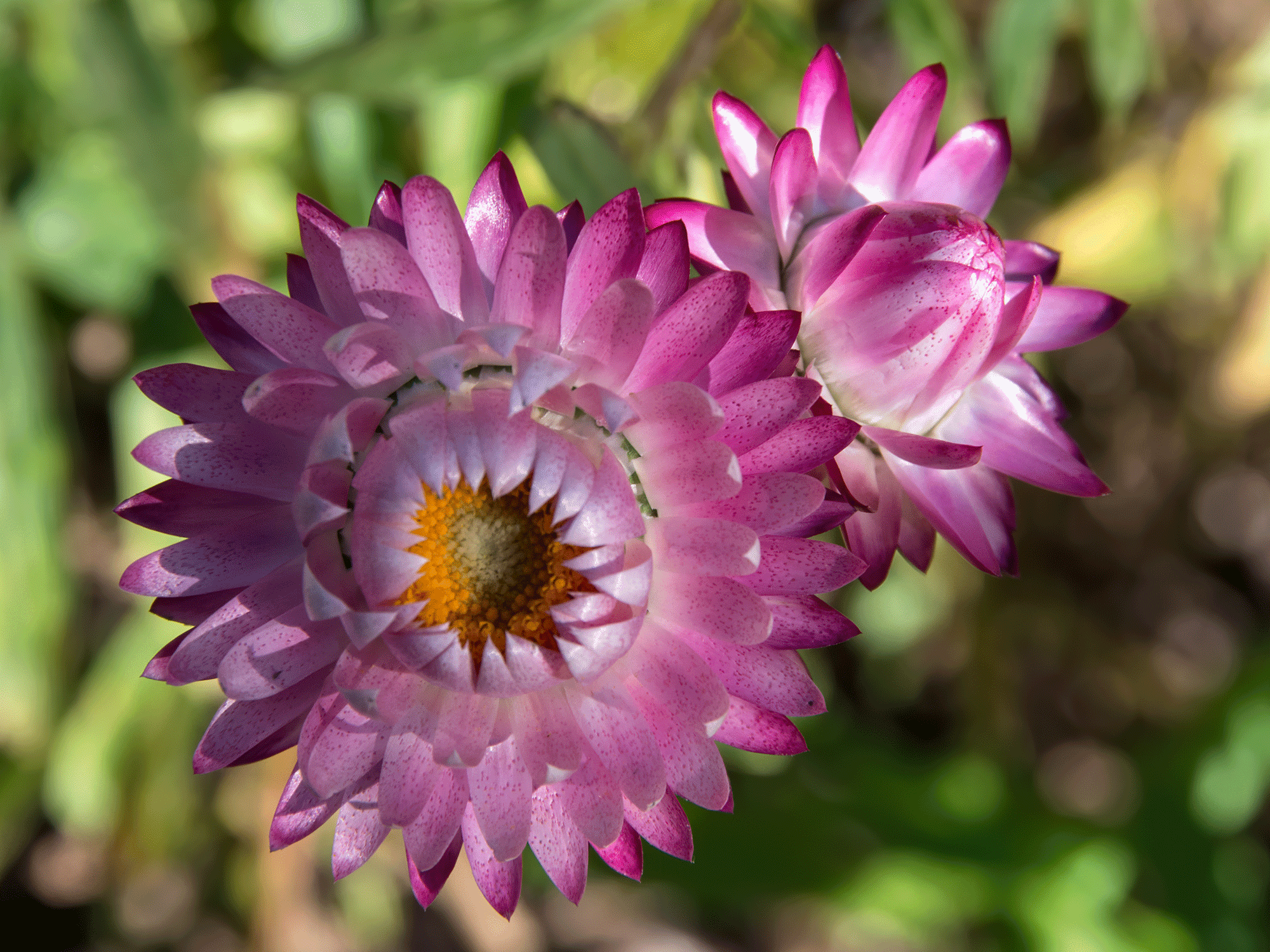
Everlasting daisies thrive in sunny spots. Picture: Getty
7. Geraldton Wax
This Western Australian native grows on small, dense shrubs with small pink or white flowers that bloom from June until November that attract bees.
Geraldton wax is an edible native Australian plant with leaves similar to rosemary but with flavours more similar to lemon-myrtle or makrut lime.
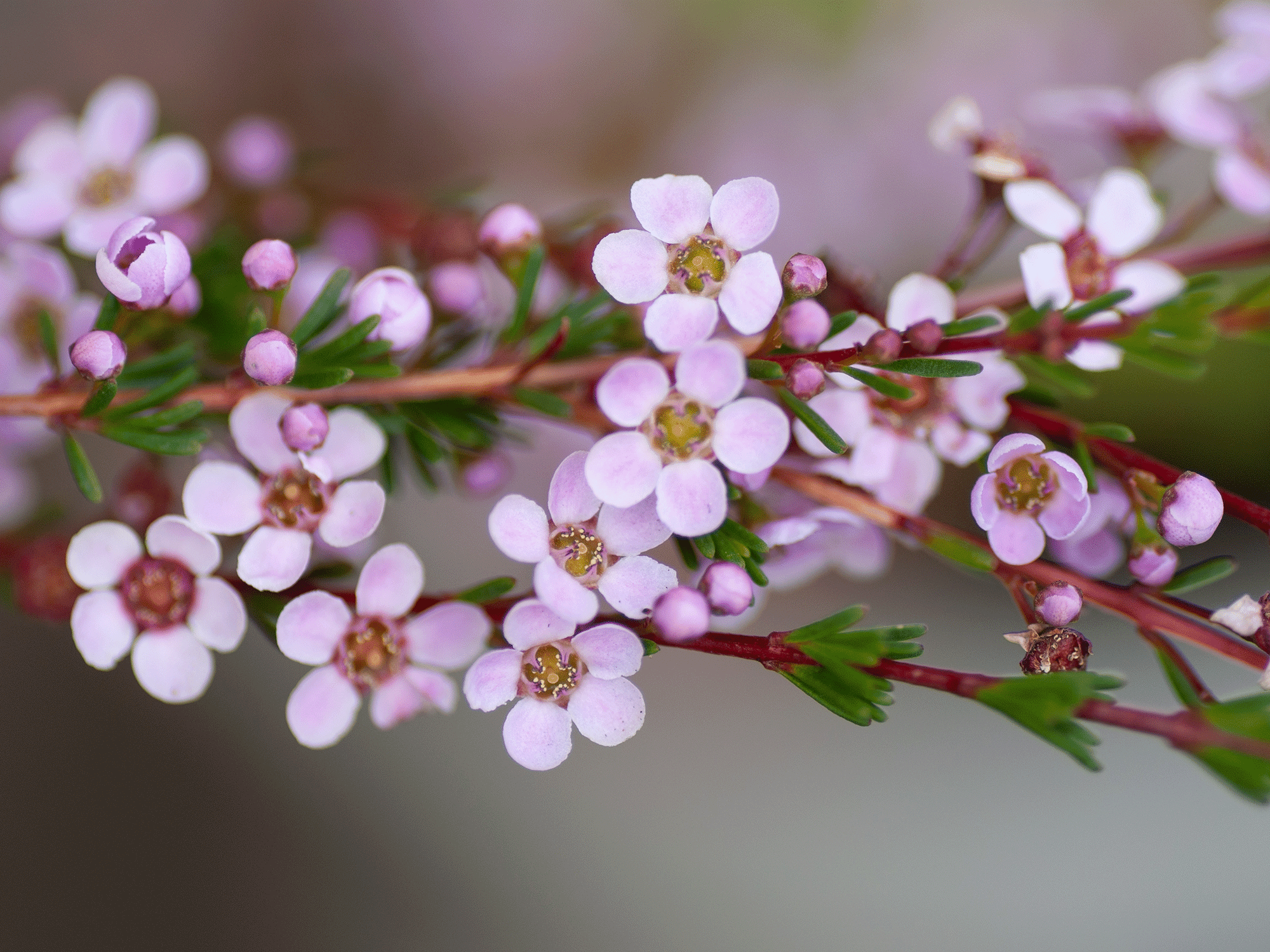
Geraldton wax flowers will bring birds and pollinators to your garden. Picture: Getty
Geraldton wax is particularly hardy and fairly easy to grow but does particularly well in well-drained sandy soil and plenty of sun. While Geraldton wax can be grown in humid climates, this can limit its lifespan.
8. Wattles
No list of Australian natives would be complete without our national flower. Wattles or acacias are fast-growing and can tolerate both heat and cold – but as with all natives, growing varieties native to your local area will usually result in better results.
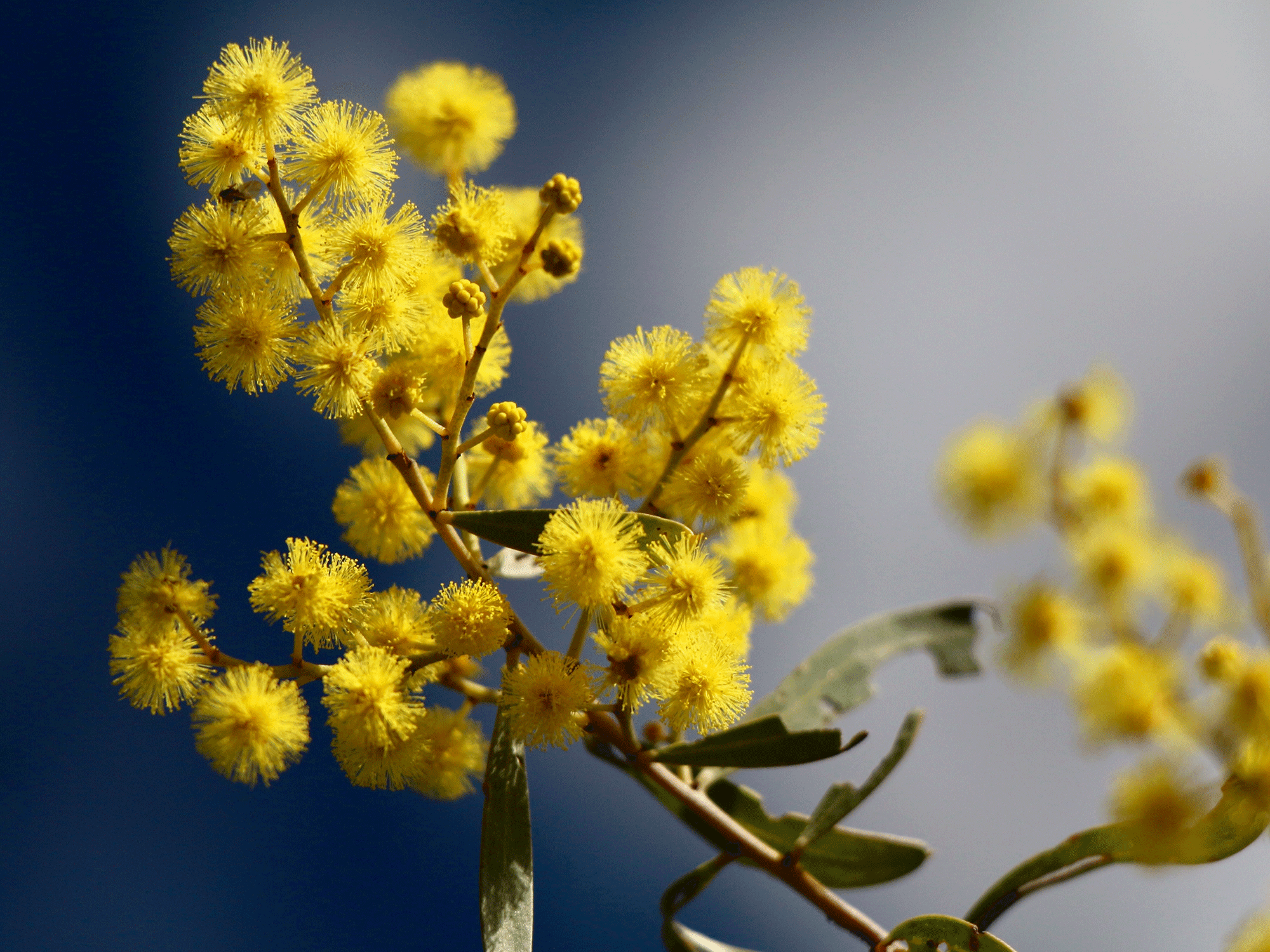
Quintessentially Australian, wattle is a riot of yellow fuzzy flowers for a few weeks per year. Picture: Getty
The bright yellow fuzzy flowers add pops of colour during spring and summer attracting pollinators and birds. While many people associate them with hayfever, the pollen makeup on many species means that it is quite heavy and unlikely to cause irritation. Other, less attention-grabbing plants, are more likely the cause.
Wattles can also help improve your soil. They are technically legumes meaning they can absorb nitrogen directly from the air. Not only does this leave more nitrogen in the soil for surrounding plants, but the roots of the wattle can add nitrogen back in, providing vital nutrients for your garden and improving your soil quality.
Wattle seeds are also a popular bushfood with a mild nutty, chocolatey flavour that is reminiscent of coffee.
9. Billy buttons
If you’re missing the gene for green thumbs but still want pops of colour if your garden, then billy buttons could be the answer.
With long stems and yellow globe-shaped flowers, these plants are extremely easy to look after. They prefer moist and well-drained soil but are tough against most conditions so can tolerate drought and even frost.
These wildflowers are native to eastern New South Wales but can be grown in most climates and can easily be dried and still maintain their colour making them popular in dried flower arrangements.
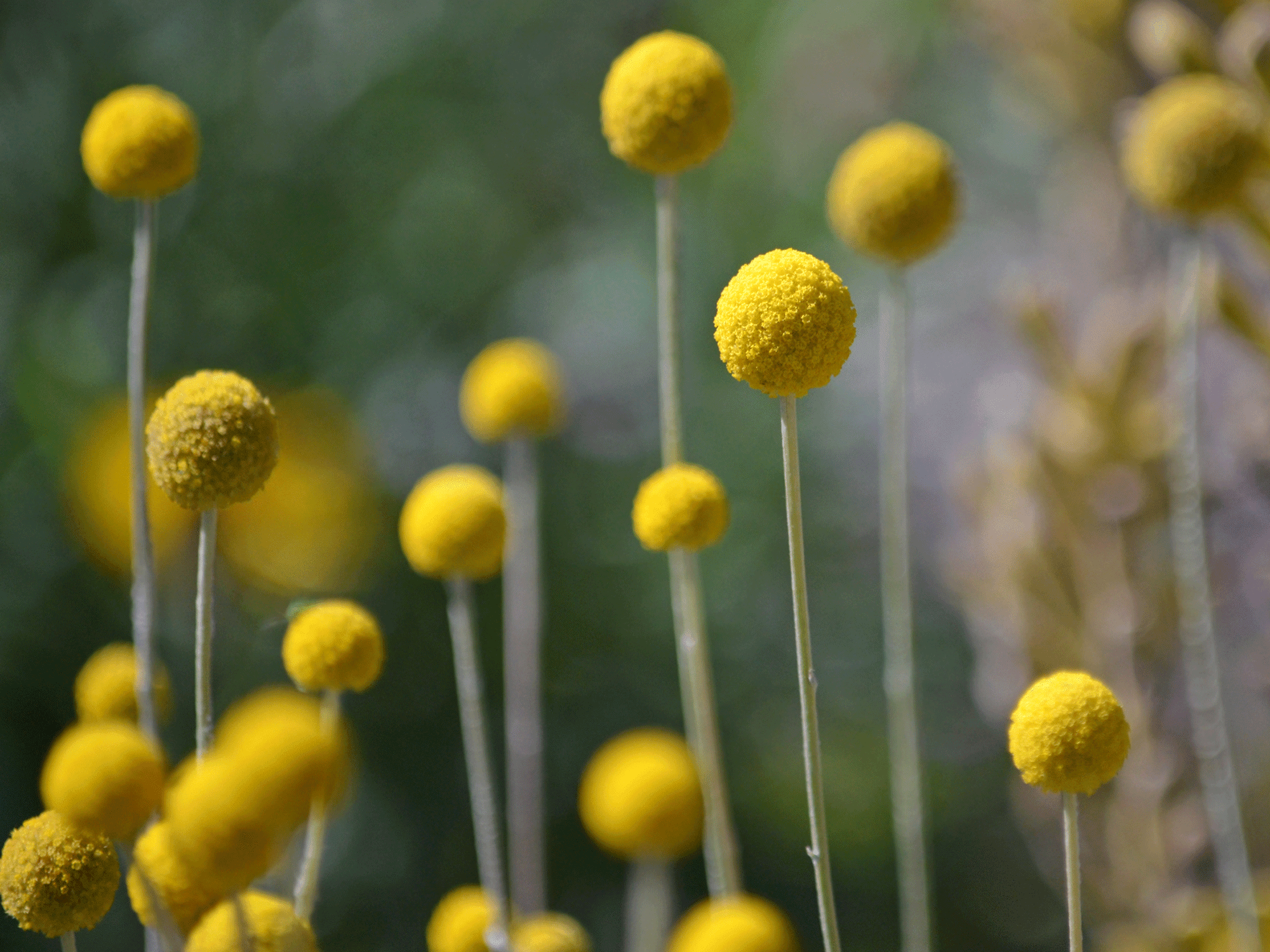
Billy buttons also make for great dried floral arrangements. Picture: Getty
10. Sturt’s Desert Pea
While stunning with its red and black flowers, growing the Sturt’s desert pea is not one for the faint of heart.
This temperamental flower needs perfect conditions to succeed including perfect drainage and full sun.
Though it is the floral emblem of South Australia, these plants are found in the wild in arid regions of central and Western Australia.
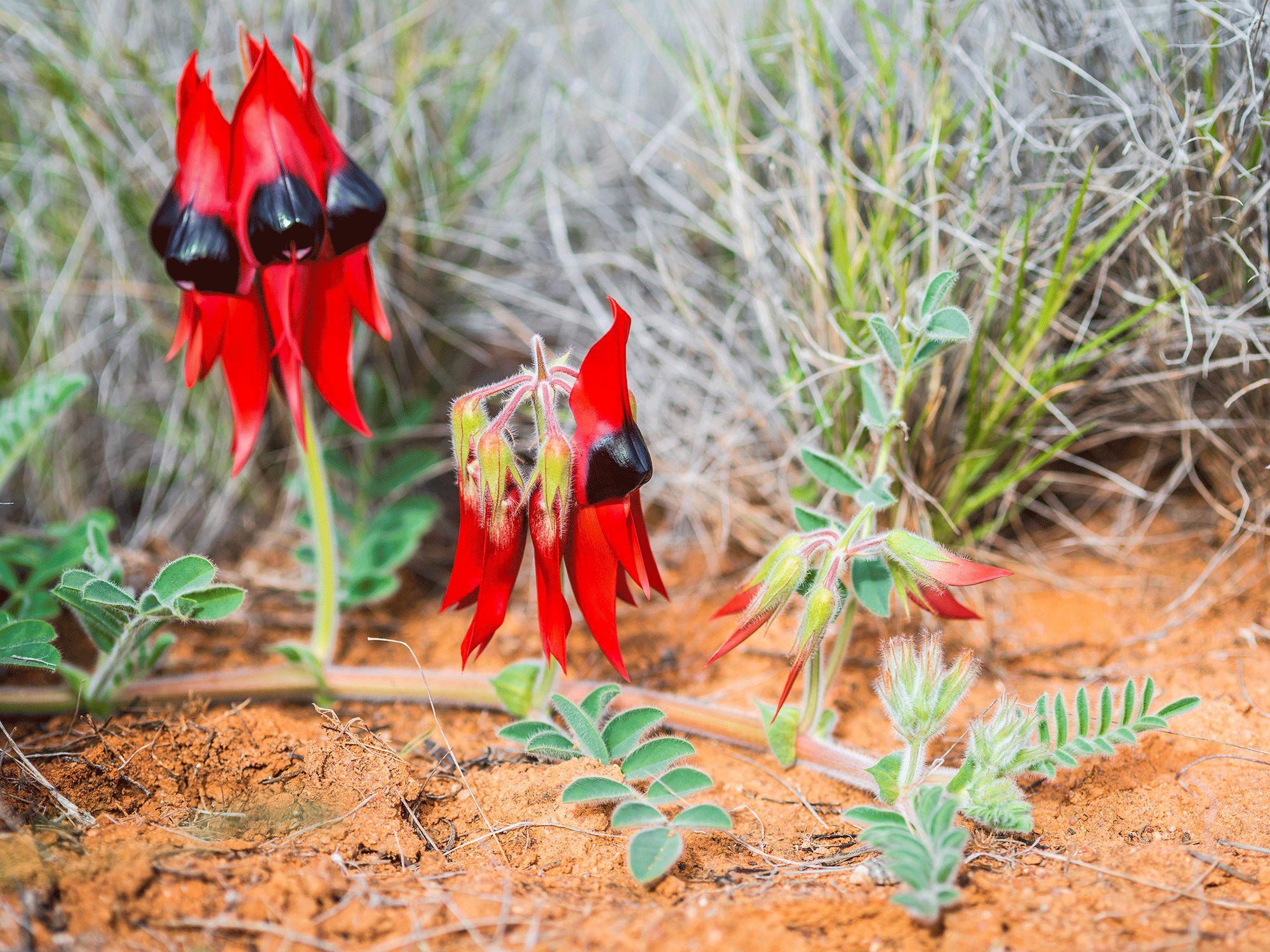
Sturt’s desert pea is a challenge to grow but the incredible floral display is worth the work. Picture: Getty
These delicate flowers are also susceptible to root rot but if you can get your hands on a grafted plant, you’re more likely to have success.
11. Lilly pilly
Lilly pillies are one of the most popular choices for Australian gardens. Also known as an Australian cherry, these evergreen trees are dense and fast growing so they are a popular choice for hedges.
They tolerate a variety of conditions from full sun to partial shade and can be found all along the east coast of Australia from the tropics to more temperate climates.
While the fruit is edible, they are more favoured for its ability to create privacy and attract native wildlife.

Lilly pillies are a fantastic choice for those looking for a hedging plant. Picture: Getty
12. Canberra Bells
One for the cooler climates, Canberra bells are a tough and compact shrub that grows to about 1m making them ideal for low hedges.
They can tolerate both drought and frost and will do well in either full sun or shade.
Canberra bells flower in autumn with two-toned flowers of red and cream.
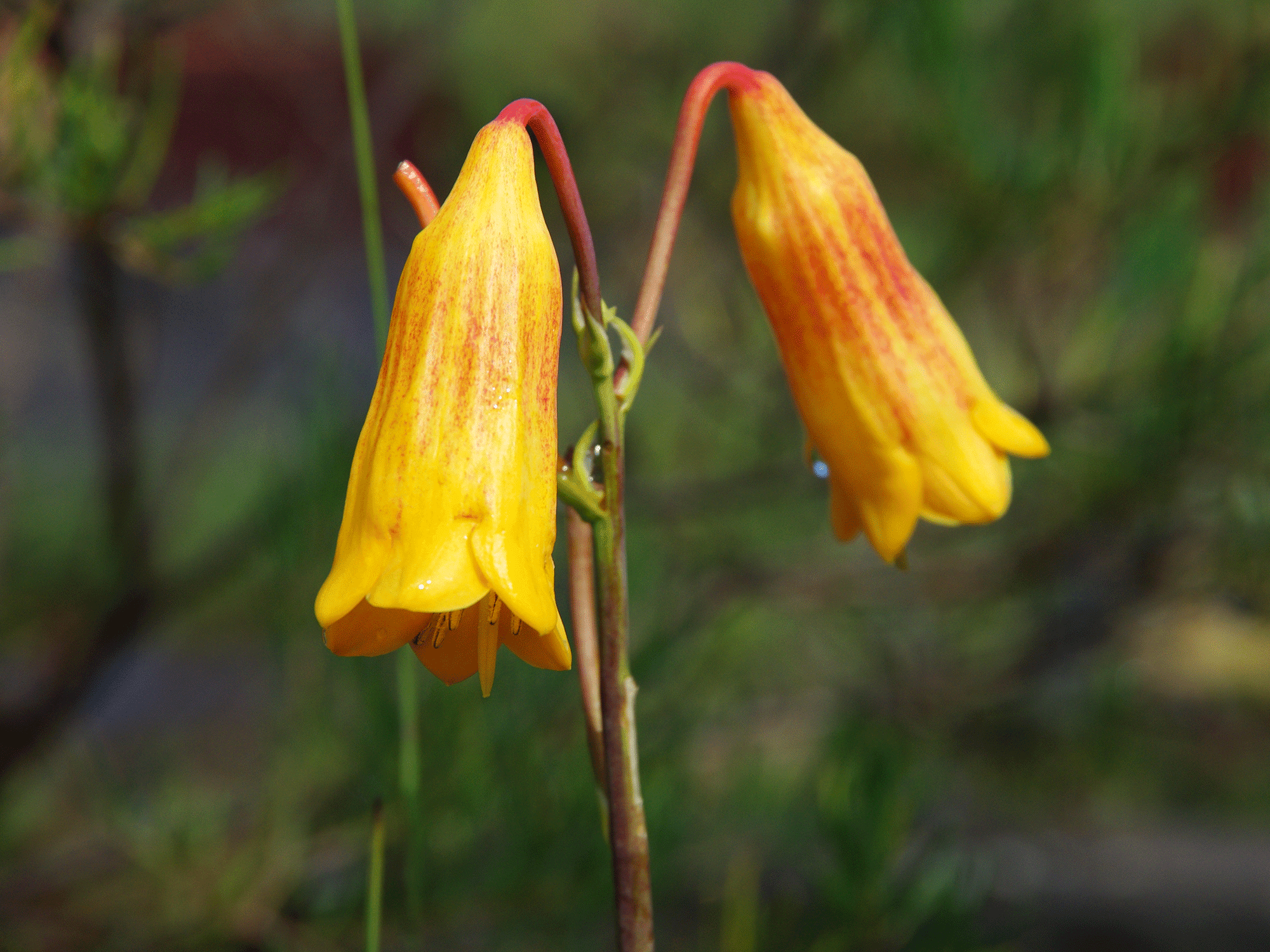
Canberra bells have stunning yellow-pink flowers. Picture: Getty
13. Grevillea
Grevilleas are a popular sun-loving plant that can grow all over Australia. Also known as a spider flower thanks to its long stamens, these evergreen shrubs are a great source of food for wildlife with plenty of pollen attracting insects, birds and other wildlife.
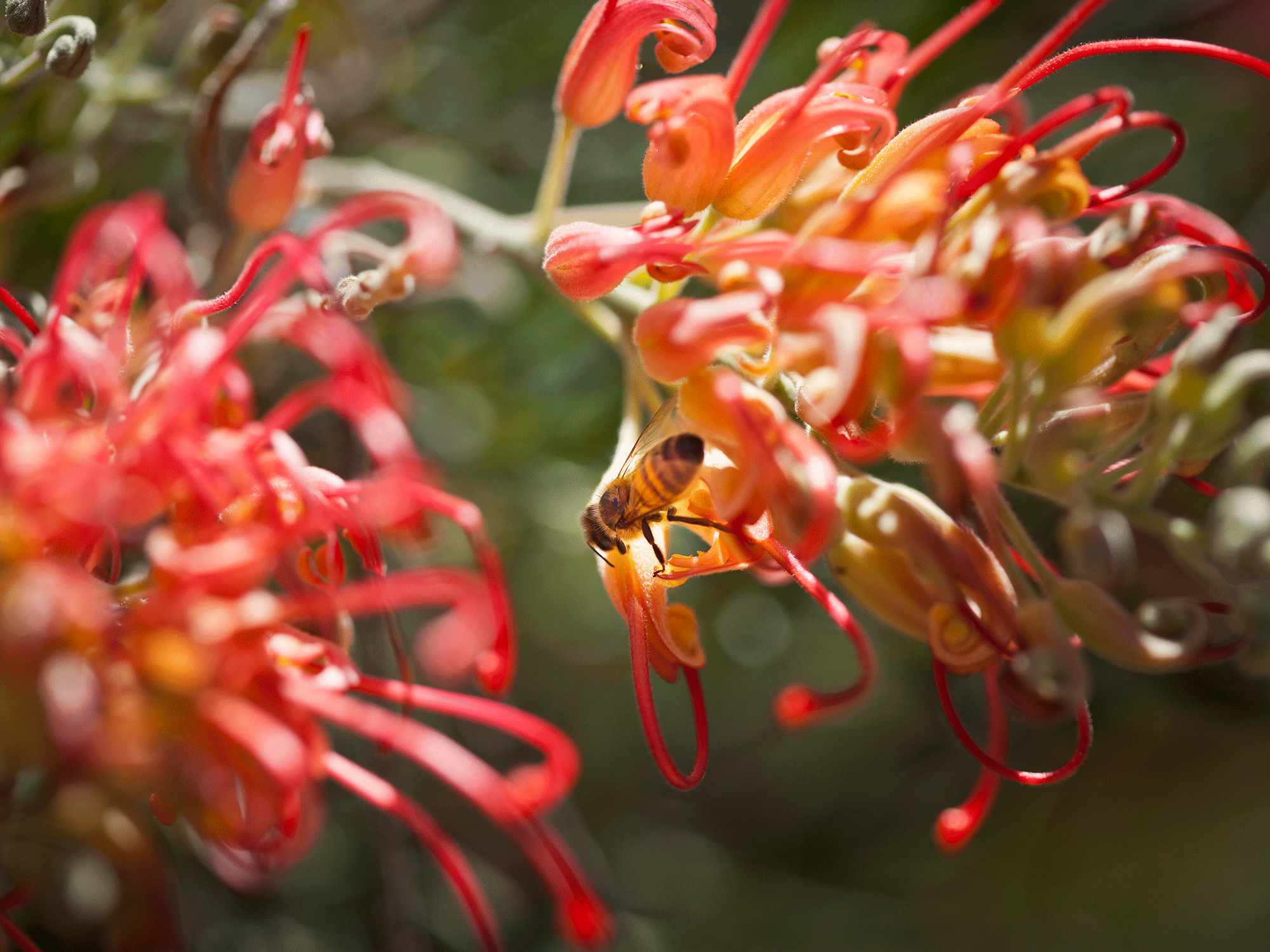
Grevilleas will attract bees and other pollinators to your garden. Picture: Getty
There are plenty of varieties so it’s best to choose one native to your area – while some grevillea can handle frost, others can’t. The sizes also vary, with some varieties being ground cover while others are shrubs or even trees. The leaves are prickly and can cause irritation so it’s best not to plant them directly alongside paths.
Grevilleas enjoy a sunny spot with well-drained, slightly acidic soil.
14. Flannel flower
The flannel flower, named for its soft feel, grows in the sandy soil in coastal areas of NSW and Queensland, but can be grown in plenty of different climates with shallow sandy soil and can even flourish in pots.
While it’s known for its silvery grey flowers, other varieties have pink flowers – both of which flower yearlong although they flourish in spring. To keep your flannel flower blooming, regularly remove old dying flowers to encourage new growth.
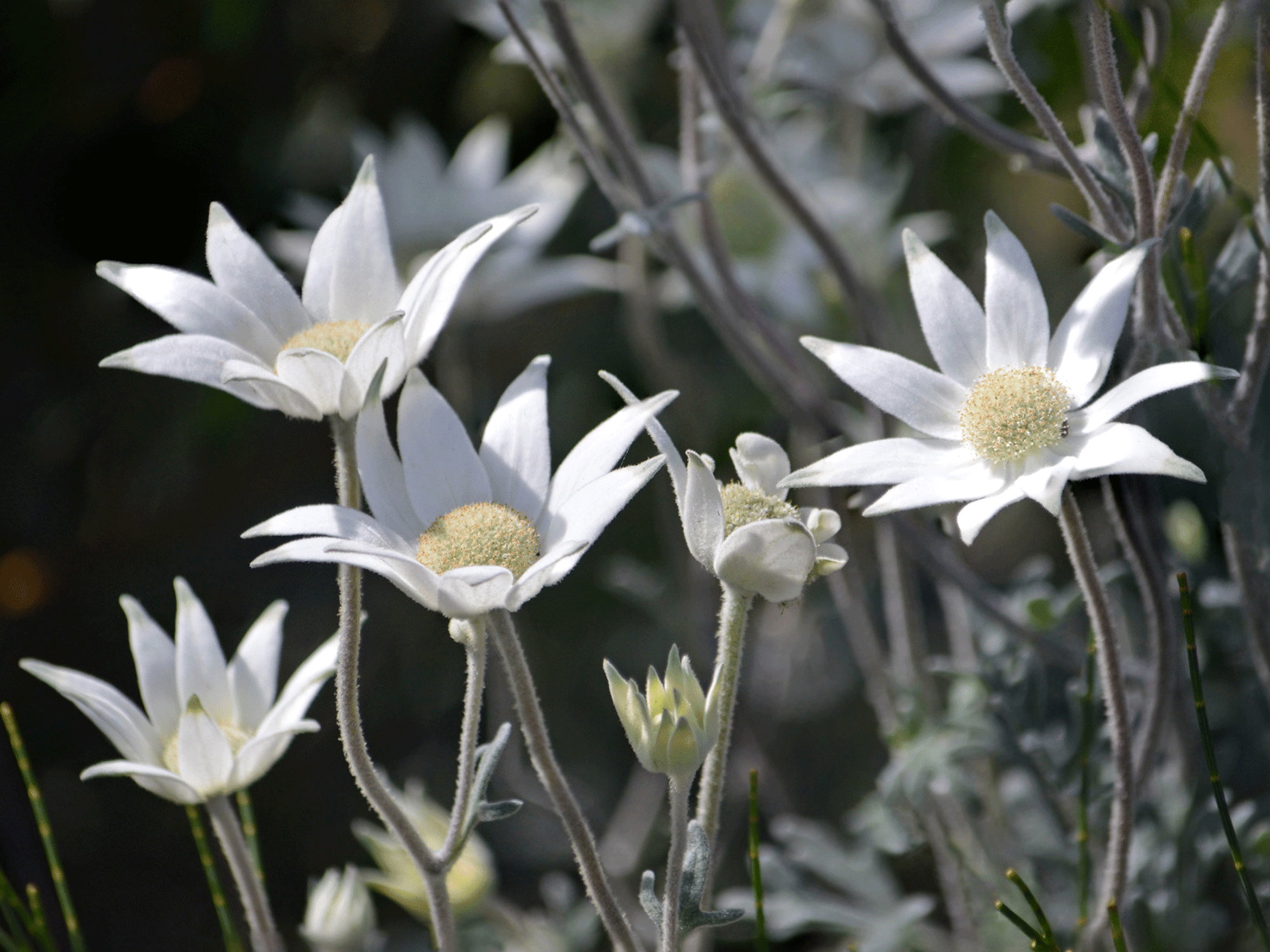
Flannel flowers have soft textured foliage and stunning floral displays. Picture: Getty
15. Illawarra flame tree
Driving along the east coast between southern NSW and far north Queensland, it’s hard to miss blinding bright red trees.
Often compared to jacarandas (which are native to South America) these trees flower throughout summer when they are also bare of leaves which further highlights the bright red flowers.
In tropical climates, these trees can grow up to 30m, whereas further south they usually grow to 10m so make sure you have room for these trees to grow and keep them at least 10m away from any structure. However, if you have a backyard big enough, you’ll be rewarded with a stunning show every summer.

Illawarra flame trees can reach sizes of up to 30m in the right conditions. Picture: Getty
16. Native violets
A beautiful ground cover, native violets are a low-maintenance native flower that is ideal for shaded areas and can even be used as a lawn substitute. White and purple flowers spring up during warmer months above the round dark green leaves.
They can easily be grown throughout Australia but do enjoy shaded, constantly moist areas.
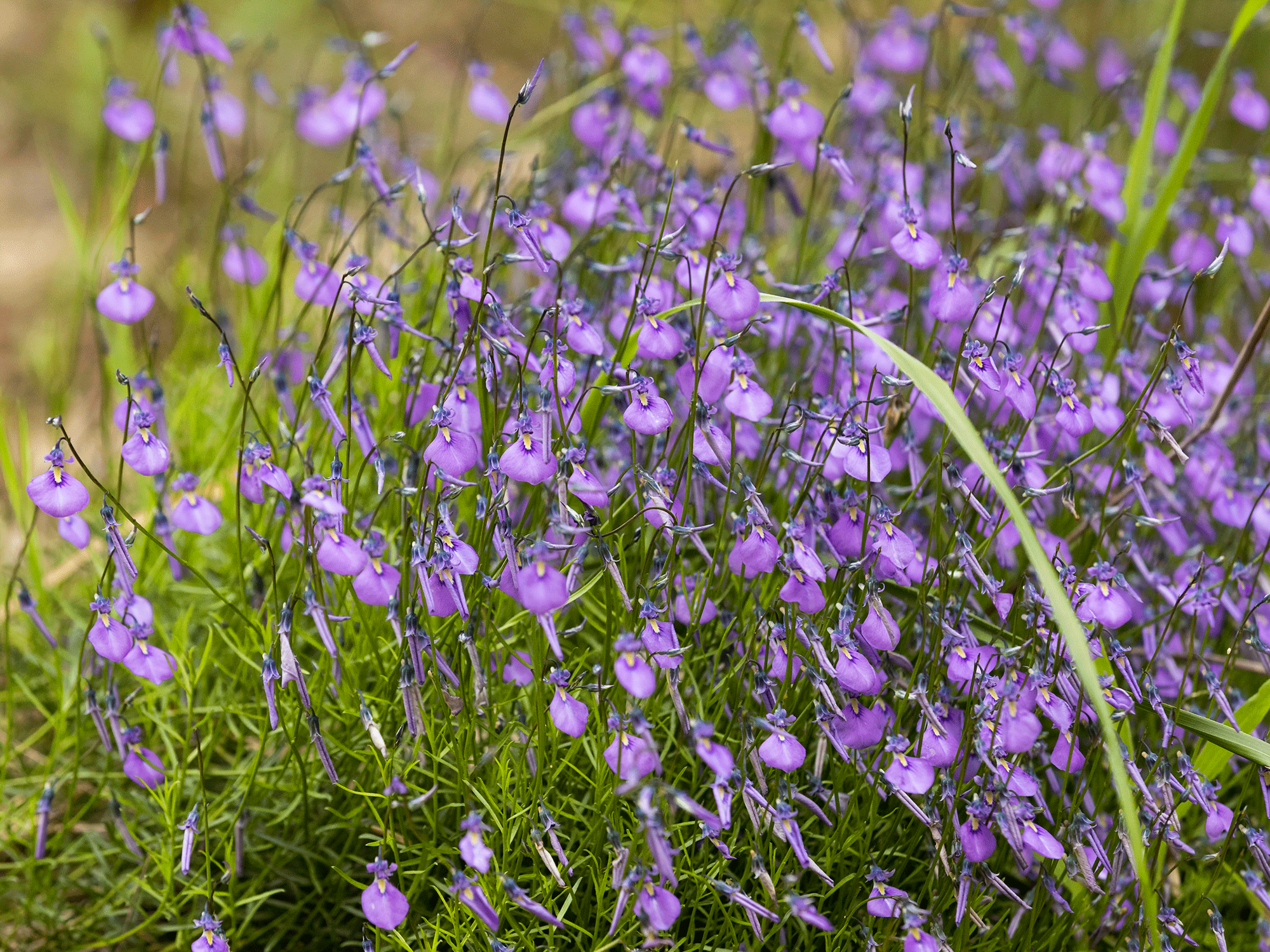
Wild Violet (Hybanthus calycinus) is a small perennial herb, endemic to the south west of Western Australia. Picture: Getty
Why are Australian native flowers growing in popularity?
Australian native flowers and plants have been steadily growing in popularity in urban areas.
One of the main reasons is a growing focus on native wildlife and pollinators, particularly bees – which has also led to the addition of features like bee bricks and the rise of urban apiarists and bee hives.
These native plants are also popular because they are well-suited to Australian climates. Due to Australia’s harsh and extreme conditions, many Australian native plants are extremely hardy and low maintenance, only requiring occasional watering once established.

Creating a garden using native flora will make it more low maintenance and do good for the local pollinator populations. Picture: realestate.com.au
Does planting native flowers help wildlife?
Native flowers and plants are an important part of the ecosystem, so adding these plants to your garden will help create both food and habitats for native wildlife. While bees and butterflies spring to mind, Australia has plenty of birds who eat both nectar from flowers as well as fruits from these trees, as do possums.
Educating yourself on specific varieties native to your region will have even better results.
Where to find and buy native Australian flowers
Thanks to the increasing popularity of native plants, major retailers like Bunnings stock a wide variety.
Many areas will have specialised native plant nurseries too and it’s also possible to buy these plants online, especially if you want to plant from seeds.